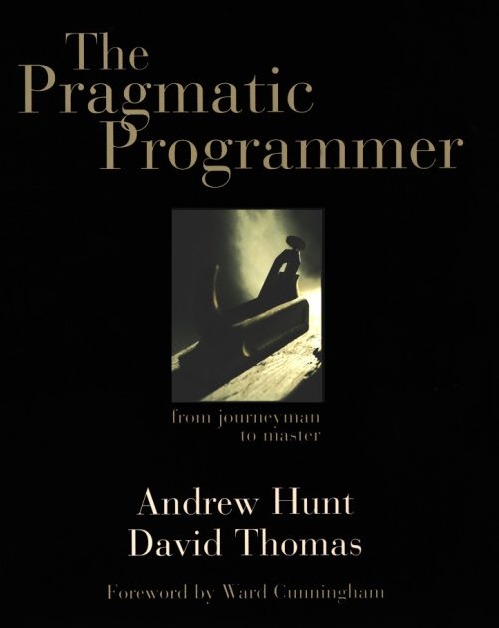
Finally I had time to read the pragmatic programmer: From journeyman to master. I wish I prioritized differently. The book is written by @PragmaticAndy & @pragdave. This is the second book written by Andy Hunt I’ve read. Read my blog posts about that book. The pragmatic programmer is ranked 2nd in “Top Ten Most Influential Programming Books of All Time”. I don’t know if that is true but I think every software developer should read this book.
First of all the book is easy to read. It sometimes reads like a novel. In the book many topics are covered. From using a VCS via architectural principles to practical advice how to handle problem solving. Throughout the book you find 70 tips. These tips are also collected in a quick reference guide in the back of the book. Some of the tips:
3. Provide options, Don’t make lame excuses
Instead of excuses, provide options. Don’t say it can’t be done; explain what can be done.
8. Invest regularly in your knowledge portfolio
Make learning a habit.
20. Keep your knowledge in plain text
Plain text won’t become obsolte. It helps leverage your work and simplifies debugging and testing.
55. Don’t think outside the box – Find the box
When faced with an impossible problem, identify the real constraints. Ask yourself: “Does it have to be done this way? Does it have to be done at all?”
In the book there are many analogies used. These make the advice easier to remember. I won’t forget broken windows theory and Cooking stone soup. The book is pretty old. It has been published in 1999, but for me it is still accurate. Yes there are some things when you notice that the book is that old. CORBA is named and EJB is marked as a good example for configuration over integration. As a developer working in the Java world using Spring, Hibernate and all the other frameworks. I agree that configuration has his place. However many times I’ve been in configuration hell. For me this mantra has evolved to be convention over configuration, mostly popularized by Ruby on Rails.
Overall the book overall covers many practices and tips that are still useful. Some of them you know already, some might be new. I gained the most insight in the plain text chapter. The combination of plain text with version control is fantastic. I would strongly recommend reading this book.
2 responses to “Review: The pragmatic programmer”
[…] while ago I read the pragmatic programmer. In the book are many tips listed. In the back of the book there is an tear-out card with all the […]
[…] ATG uses property files for dependency injection. Unlike Spring these are not in a XML format but just key-value pairs. This makes the property files much more compact. One disadvantage is that (just like Spring/hibernate etc.) it can result in a config hell. I’m not sure anymore if configuration over code is a good mantra. But I’ll save that discussion for my review of the pragprog book. […]